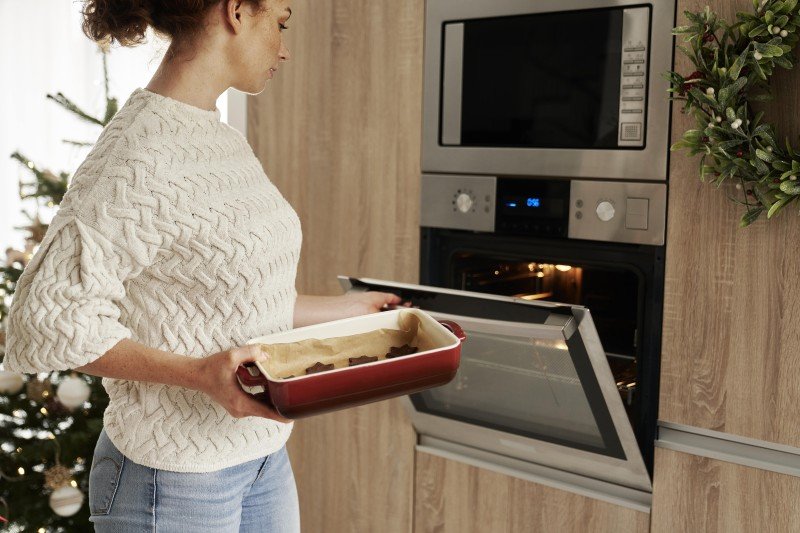The Rise of Integrated Ovens and Hobs: A Comprehensive Guide
In contemporary kitchens, space optimization and aesthetic appeal are paramount. Integrated ovens and hobs have swiftly increased to prominence, combining technology, functionality, and design into one smooth cooking experience. This short article explores the functions, benefits, and factors to consider of integrated ovens and hobs, along with regularly asked concerns about these necessary kitchen appliances.
What are Integrated Ovens and Hobs?
Integrated ovens and hobs describe kitchen appliances that are designed to mix into cabinetry while using a multitude of cooking functions. Unlike freestanding designs, these built-in systems are typically installed within kitchen cabinets, enabling a smooth and orderly appearance.
Kinds Of Integrated Ovens
- Single Ovens: These flexible ovens are perfect for smaller sized cooking areas or for those who prepare in smaller sized batches.
- Double Ovens: Perfect for larger families or passionate cooks, double ovens supply extra cooking area and flexibility, allowing numerous dishes to be prepared concurrently.
- Steam Ovens: For health-conscious customers, steam ovens use a healthier cooking method that keeps nutrients in food.
- Microwave Ovens: Often designed as integrated units, microwave ovens are best for fast cooking and reheating jobs.
Kinds Of Integrated Hobs
- Induction Hobs: These hobs utilize electromagnetic energy to prepare food efficiently and rapidly. They are praised for their security features and precise temperature control.
- Gas Hobs: Offering traditional cooking methods, gas hobs provide instantaneous heat and are preferred by numerous professional chefs.
- Ceramic Hobs: These hobs use smooth surface areas that are easy to tidy and maintain. They supply an efficient heating approach but may take longer than gas or induction.
Advantages of Integrated Ovens and Hobs
Integrating ovens and hobs into kitchen cabinetry features various benefits, making them an enticing choice for home style and cooking enthusiasts alike.
Aesthetic Appeal
- Streamlined Design: Integrated designs offer a unified look that enhances the total aesthetic of the kitchen.
- Individualized Layout: Homeowners can develop their kitchen without large devices disrupting the circulation.
Area Optimization
- Effective Use of Kitchen Space: By perfectly fitting into cabinetry, integrated systems supply more usable office.
- Removal of Clutter: Integrated units decrease visual mess, developing a more organized environment.
Boosted Functionality
- Advanced Features: Many integrated ovens and hobs featured advanced technology such as smart controls, accurate temperature level settings, and multiple cooking functions.
- Custom-made Cooking Experience: Users can customize their cooking experience with differing cooking methods, like convection, baking, or grilling.
Increased Home Value
- Modern Appeal: A properly designed kitchen with integrated appliances can considerably boost a home's resale worth, making it more attractive to possible buyers.
Factors To Consider When Choosing Integrated Ovens and Hobs
While integrated ovens and hobs supply many advantages, there are several aspects to think about when selecting the best model for your kitchen.
Kitchen Space and Layout
- Size: Ensure that the integrated oven and hob fit the existing cabinetry and kitchen layout.
- Ventilation: Proper ventilation is vital, particularly for gas hobs. Ensure that the kitchen is properly ventilated to mitigate cooking odors and excess heat.
Installation Requirements
- Professional Installation: Integrated systems might need expert setup to ensure they fit and work properly.
- Plumbing Needs: Some steam ovens might require water connections, which must be planned for throughout installation.
Spending plan
- Expense Variance: Integrated ovens and hobs can vary in rate depending on brand name, functions, and setup costs.
- Long-Term Savings: While the preliminary financial investment might be higher, consider potential energy savings and toughness over time.
Brand name and Features
- Track record: Research reputable brand names known for reliability and client service.
- Features: Look for functions that align with cooking preferences, such as self-cleaning options, Wi-Fi connectivity, and diverse cooking modes.
Comparison of Integrated Ovens and Hobs
| Feature | Integrated Ovens | Integrated Hobs |
|---|---|---|
| Design | Seamless built into cabinetry | Flush with countertops |
| Cooking Type | Convection, steam, microwave | Gas, induction, electric |
| Cleaning up | Self-cleaning alternatives offered | Easy-to-clean surface areas |
| Energy Efficiency | Generally energy-efficient | Varies by type (induction is best) |
| Installation | Needs professional assistance | May require special venting (for gas) |
Frequently Asked Questions (FAQs)
1. What is the primary advantage of an integrated oven over a freestanding one?
Integrated ovens offer a cleaner, more structured look while optimizing kitchen space.
2. Are integrated hobs easy to install?
The majority of integrated hobs require professional setup, particularly gas systems, due to safety standards.
3. Can I position an integrated oven anywhere in my kitchen?
Integrated ovens need to be placed within suitable kitchen cabinetry created for their size and ventilation requirements.
4. Do integrated ovens and hobs require special maintenance?
Regular cleansing and checks of seals and features are vital to keep efficiency, but they do not require special upkeep beyond standard device care.
5. How do I choose between gas and induction hobs?
It depends on personal preference, cooking routines, and budget. Buy Oven Online is quicker and more secure, while gas provides immediate heat and more control.
Integrated ovens and hobs are a necessary function in modern kitchen design, providing both aesthetic appeal and valuable performance. By thinking about the benefits, design, installation requirements, and brand name credibility, house owners can make educated choices that enhance their cooking experiences. As kitchen patterns continue to progress, integrated devices will likely stay at the forefront, creating spaces that are both lovely and practical.

